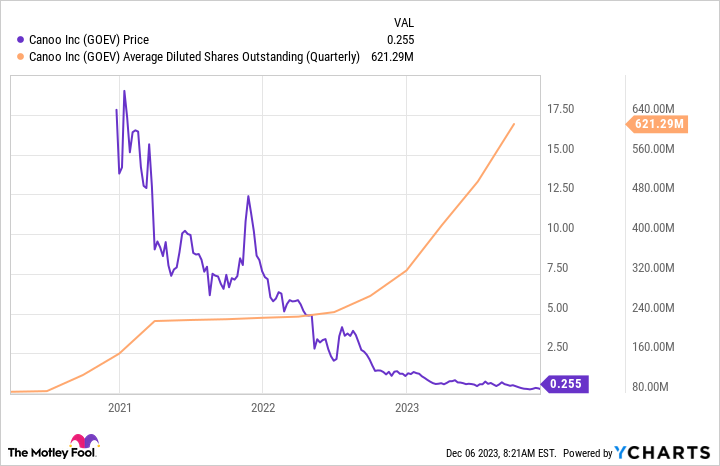Canoo (GOEV -0.88%) has huge ambitions of becoming an electric vehicle manufacturer. So far, there’s more ambition than business. In fairness, though, the company did reach an important milestone in the third quarter. It generated revenue. Here’s why that’s not nearly enough to make this stock worth buying today.
Canoo has put in a lot of work
It isn’t easy building a car company from scratch. It gets extra complicated when you add in that Canoo is looking to make electric vehicles, a newer technology than the combustion engines that power the vast majority of the world’s cars and trucks. That the company is now staffing up a manufacturing facility in Oklahoma is a statement to what it has achieved. So, too, is the fact that it reported $519,000 in revenue in the third quarter.
Image source: Getty Images.
That’s basically the first time the company has reported revenue, so it is a huge milestone. It means Canoo has actually managed to sell something of value. To date, money has just been going out the door to pay for building the business that management hoped would one day, you know, produce some revenue.
While the top line of the earnings statement was a welcome surprise in the quarter, the rest of the news from the company remains touch and go at best. For example, as you proceed down the income statement, you see that far more money is going out than coming in.
The cost of goods sold was $903,000, leading to a negative gross margin of $384,000. Then there’s the cost of research and development and selling general and administrative expenses, which were $22 million and $25 million, respectively. The loss from operations was nearly $49 million.
This does not appear to be a sustainable business as it stands today, which is why the 10Q includes a going concern warning. Going concern warnings are required when a company’s management team believes there’s a real risk it will be unable to fund the business over the next 12 months. Which brings the story here to the balance sheet.
More cash means more dilution
The big picture here is that Canoo does not produce enough cash on its own to fund the business it is building. That isn’t shocking, given the scale of what it is trying to create. But there are very real costs that must be paid, and the money has to come from somewhere. That somewhere has largely been the capital markets via debt and equity sales. The company has some debt, notably including convertibles, but the real story is the stock sales it has used.
Every new share of Canoo stock issued dilutes existing shareholders. And the numbers are pretty shocking. At the end of the third quarter of 2022, the company had 355.4 million shares outstanding. At the end of the third quarter of 2023, that number had grown to 650.9 million, an 83% rise in just a single year.
The problem is even uglier when you consider that the stock price has plunged over the past two years. The lower the stock price goes the more shares it takes to raise the same amount of cash. And the company needs that cash to continue spending on the development of its manufacturing facilities and to fund its research and development efforts. With virtually no revenues, there’s really no other way to get it. And it’s also worth noting that the company ended the quarter with only around $8 million of cash.
Canoo isn’t going away yet
But don’t fear; the sale of preferred stocks and warrants that occurred after the quarter’s end increases the cash balance to $53 million. The company will likely live for another quarter but at the expense of diluting its existing shareholders again. And it still doesn’t make any money while generating only modest revenues compared to its expenses.
For most investors, this is not a great investment choice because there is a very real risk (openly admitted by management) that it will be unable to stay afloat. Indeed, at this point, if Wall Street decided to stop providing cash to Canoo, its outlook would darken considerably. Even aggressive investors might want to expect until the company turns profitable before considering this stock.




